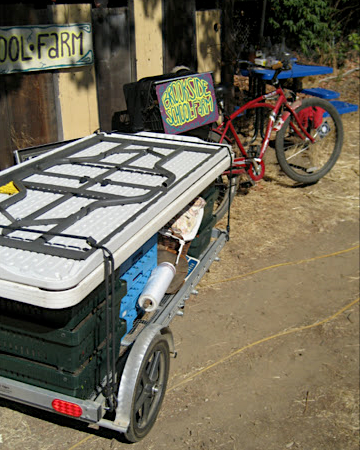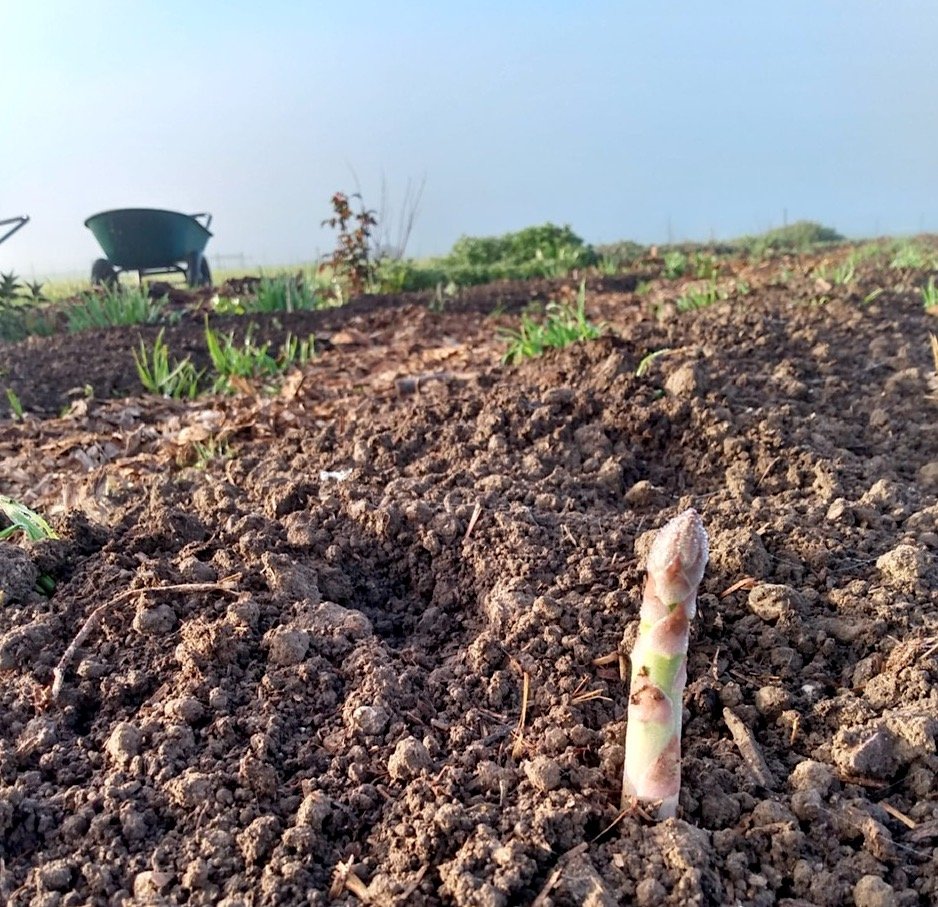By AJ
So, I have bicycle plans. Some of you may notice me riding around the farm on a red cruiser bike with an odd contraption on the front of the handle bars. This contraption is part of an electric conversion kit i bought from SWYTCH, out of the UK.
Back in the day, when I ran Brookside School Farm, I didn’t own a vehicle. So I went around on this same cruiser (which someone dumped in their yard with a “FREE” sign attached) with a bicycle trailer from BIKES AT WORK tagging along in the back. Every week, I loaded up that trailer with my produce, tables, signs, etc., and rode the 8 blocks to the farmers market.
I didn’t have any electrics attached back in Mendocino county, but I was also younger and only navigating smooth and flat terrain. I’m honestly not trying to work that hard, nor do I need to, so adding the electric assist will rescue me from additional physical labor.
My plan is to use this electric assist/trailer combination as much as possible for my sheep duties and general transportation needs around the farm. There is a BIKES AT WORK trailer on its way here soon. A smaller version of the one I used to have, just big enough for 2 bales of alfalfa, or the sheep fencing, which is all I need. I’m very enthusiastic about it and i think the sheep might be too. We all enjoy the quiet, especially in the morning. Now, instead of screaming at the 4x4’s and the ATV’s, they are starting to scream at me and my bike. Except they still scream at Danny, because all the animals love Danny.
If you see me or my new mode of transportation around the farm, feel free to check it out or ask questions!
Upcoming Events: Farm Potluck Friday July 28th
BBQ and Baseball Sunday August 27th
Pick List:
Eggs
Cortland Yellow Onions
Garlic
Dark Star, Cocozelle, and Yellowfin Summer Squash
Mideast Peace Cucumbers
Song Cauliflower
Finale Fennel
Evergreen Hardy Scallions
Lettuce
Champion Collards
Ruby Red Chard
Regiment Spinach
Cilantro, Dill, Parsley, and Basil
Albion Strawberries (Just a taste for now!)
Sonora wheat flour and wheat berries
Herbal Tea (Blends are done until the fall)
Whole Dried Chile peppers (Please bring your own jars!)
Pick your own flowers and herbs - You can pick out of the herb garden, the annual field and the perennial field! There are flowers in all that are ready.
Saltonstall Olive Oil (Please bring your own jars!)
Revolution Bread: Fresh bread on Friday (Frozen bread available.)
Open Field Farm 2023 | The "ALL YOU NEED TO KNOW" guide for members
Frida Kahlo’s Zucchini Salad (Ensalada de Calabacín), from saveur.com
8 tbsp. olive oil
3 tbsp. red wine vinegar
1 tsp. kosher salt, plus more
½ tsp. sugar
6 small zucchini, sliced
2 ripe avocados, sliced
3 oz. crumbled queso añejo or parmesan
2 tbsp. cilantro, roughly chopped
In the 1930s, artists Diego Rivera and Frida Kahlo often hosted festive dinner parties—which Frida called "día de los manteles largos," the days of the long tablecloth—at their Mexico City home. The recipe for this simple Mexican salad of grilled zucchini, avocado, and salty, crumbled añjeo cheese was served at a dinner party attended by Mexican composer Carlos Chávez and Nelson Rockefeller. It comes from Frida's Fiestas by Guadalupe Rivera and Marie-Pierre Cole (Clarkson Potter, 1994). This recipe appeared in our November 2014 issue with the story The Art of the Meal.
Shake 6 tbsp. olive oil, vinegar, salt, and sugar in a glass jar until emulsified; set aside. Heat 2 tbsp. olive oil in a 12" skillet over medium-high; cook zucchini until golden, 10–12 minutes. Let cool slightly and overlap on a serving platter with avocados. Sprinkle with salt and drizzle with the vinaigrette; garnish with queso añejo or parmesan and cilantro.



















































